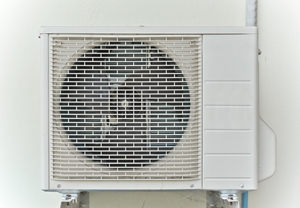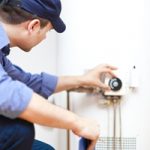There is no doubt that Australia’s ageing building infrastructure is beginning to cause a number of problems. Everything from asbestos to maintenance can begin as a small problem and then grow quickly.
However, one issue that has expanded in recent years is gas leaks. With appliances and building structures getting older, there is a higher chance that problems will arise, releasing high amount of carbon dioxide or carbon monoxide in a commercial or residential environment reducing indoor air quality.
For building managers and maintenance teams, it is important to have an idea where gas leaks are most likely to occur and how they can be managed in a timely manner.
Here are three areas where gas leaks are common:
1) Ageing pipes
In many Australia’s homes and commercial buildings, gas is the primary source of heating. Pumped into the structure from an outside source, the gas pipes only have a lifespan of around 40 to 50 years.
Once this time is up, it’s possible that the pipes can lose their seal or break because of general wear and tear. Potentially, this can result in gas flowing throughout the building without warning.
This means it’s important for building managers to conduct regular maintenance on piping to ensure it is still up to standard.
2) Ventilation issues
Australia’s warm climate means many buildings are fitted with air conditioning and ventilation systems – vital to keep the air fresh and clean.
However, as these machines begin to age and malfunction, carbon monoxide and carbon dioxide can be released into the atmosphere. Without a detailed inspection, it will be difficult to notice that the system isn’t working as the gases are odourless and colourless.
Ventilation and air conditioning systems are built to last anywhere between 10 and 20 years. However, if the air quality isn’t particularly clean, the lifespan can be dramatically reduced. This highlights the need for regular checks from industry professionals.
3) Appliances
A number of appliances in both the residential and commercial settings use gas to operate. This includes fireplaces, stoves and water heaters.
However, much like the pipes, these appliances age rapidly and the seals can deteriorate without warning resulting in a gas leak. There have been many cases in the past where appliances were left on and the gas leaked around the building causing illness or fire.
Many of these appliances are used on an everyday basis with changes visible to the naked eye. Professionals are likely to carry indoor air quality detectors which can highlight what appliances are functioning and what others need to hit the scrap heap.









 Reduce cooking oil costs while ensuring quality
Reduce cooking oil costs while ensuring quality Expert knowledge on CO2 monitoring
Expert knowledge on CO2 monitoring Refrigeration knowledge - in 3 modules
Refrigeration knowledge - in 3 modules



